Book choices for today:
Eggs Pam Robson
Meat and Protein Lola Schaefer
Protein Justine Fontes
Gecko Velthaus
Counting Little Geckos Charline Profiri
A Color of His Own Leo Lionni
Zoology: (first circle)
Need for lesson – Protein food pictures.
Science 34
Boys and girls we have talked about many food groups – vegetable-fruit, dairy, and grains. We are going to now talk about foods that have a lot of protein. Protein is a very important kind of food. We must have protein for our bodies. Your body needs protein to build cells and to fix hurt or worn out ones.
Remember when we talked about our blood cells, and we also found out that leaves have cells inside of them too. All living things are made up of cells. A cell is the smallest part of you that you can imagine. They are so small that we would need a microscope to see them. There are many different kinds of cells. There are skin cells, bone cells, hair cells, and muscle cells….millions of different cells make up your body. Protein is something that our cells need everyday.
Which foods give us protein? Let’s look at some protein foods.
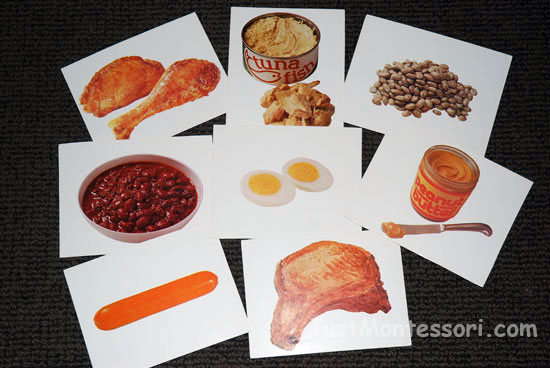
Additional Works:
Protein Food Matching – I took the protein food pictures and made a matching work with them.
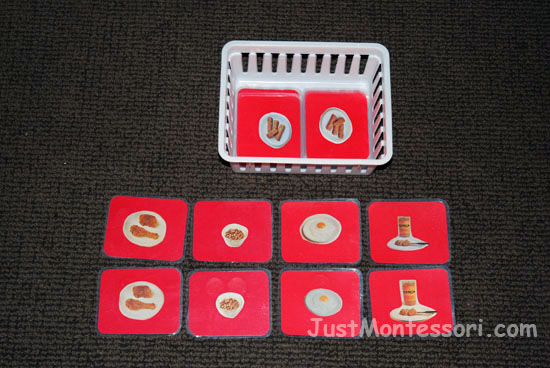
Zoology: (second circle)
Need for lesson – Picture of a chameleon and a gecko lizard.
Zoology 24
We have been talking about reptiles. Tell me some of the ways we know an animal is a reptile. Turtles, snakes, crocodilians, and lizards make up the reptile vertebrate group. We are going to talk about two kinds of lizards today. One is the gecko. Geckos are unique because they make a chirping kind of sound to communicate with other geckos. Geckos come in various patterns and colors such as blue, purple, pink, and black and are among the most colorful lizards of the world. Most geckos have sticky toe pads that allow them to climb well even on smooth surfaces. They can climb upside down also because of their special feet and toes.
The other lizard we want to talk about is the chameleon. These colorful lizards are known for their ability to change color. They have a long sticky tongue and eyes that can move independently of each other. This means that one eye can be looking one way while the other eye looks in a different direction. Chameleons spend their lives in the trees and bushes. A chameleons tail cannot grow back like most other lizard tails can. Chameleons don’t really change color to match their surroundings, and they cannot change to any and all colors. They do not look at what they are sitting on and deliberately decide to match it. Instead, each species of chameleon has a group of patterns and colors that it is able to display. Some of these patterns are designed for camouflage. At other times the skin color changes because of the chameleons mood, such as fear or anger.
Chameleons an geckos are both amazing kinds of lizards.
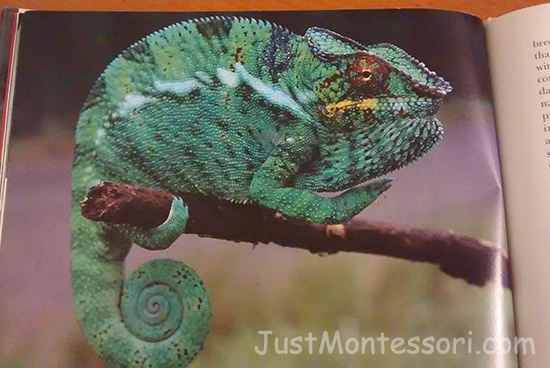
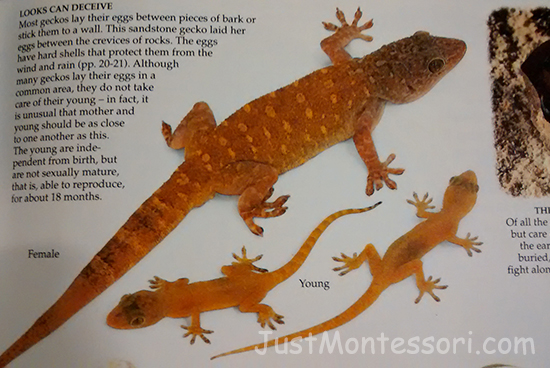
Art:
Gecko Coloring – This is a coloring page from The Mailbox Magazine. Children can color the geckos and cut them out to make them ‘climb’ on things.
Chameleon Puppets – These are also from The Mailbox Magazine.
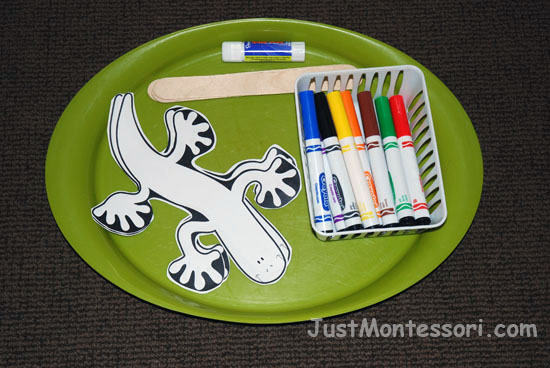
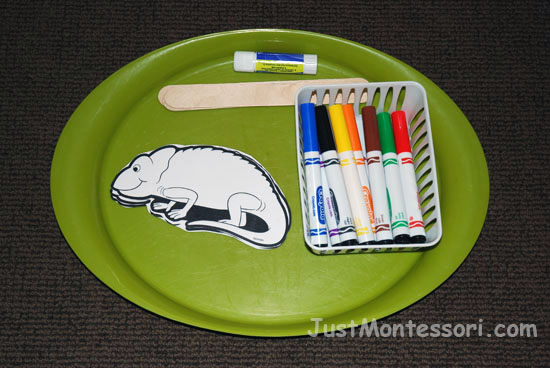
Songs/Poems:
Leaping Lizards Count (from The Mailbox Magazine)
One, two my belly’s blue.
Three, four, I catch bugs galore.
Five, six, I run on sticks.
Seven, eight, my tail is straight.
Nine, ten, my count now ends.
1-2-3-4-5-6-7-8-9-10 Leaping lizards!
Song (CD) choices for today:
Eat Good Food Exercise – Janet & Judy
Buy Weeks 11-14 PDF
-
 (D) Weeks 11-14$25.00
(D) Weeks 11-14$25.00


